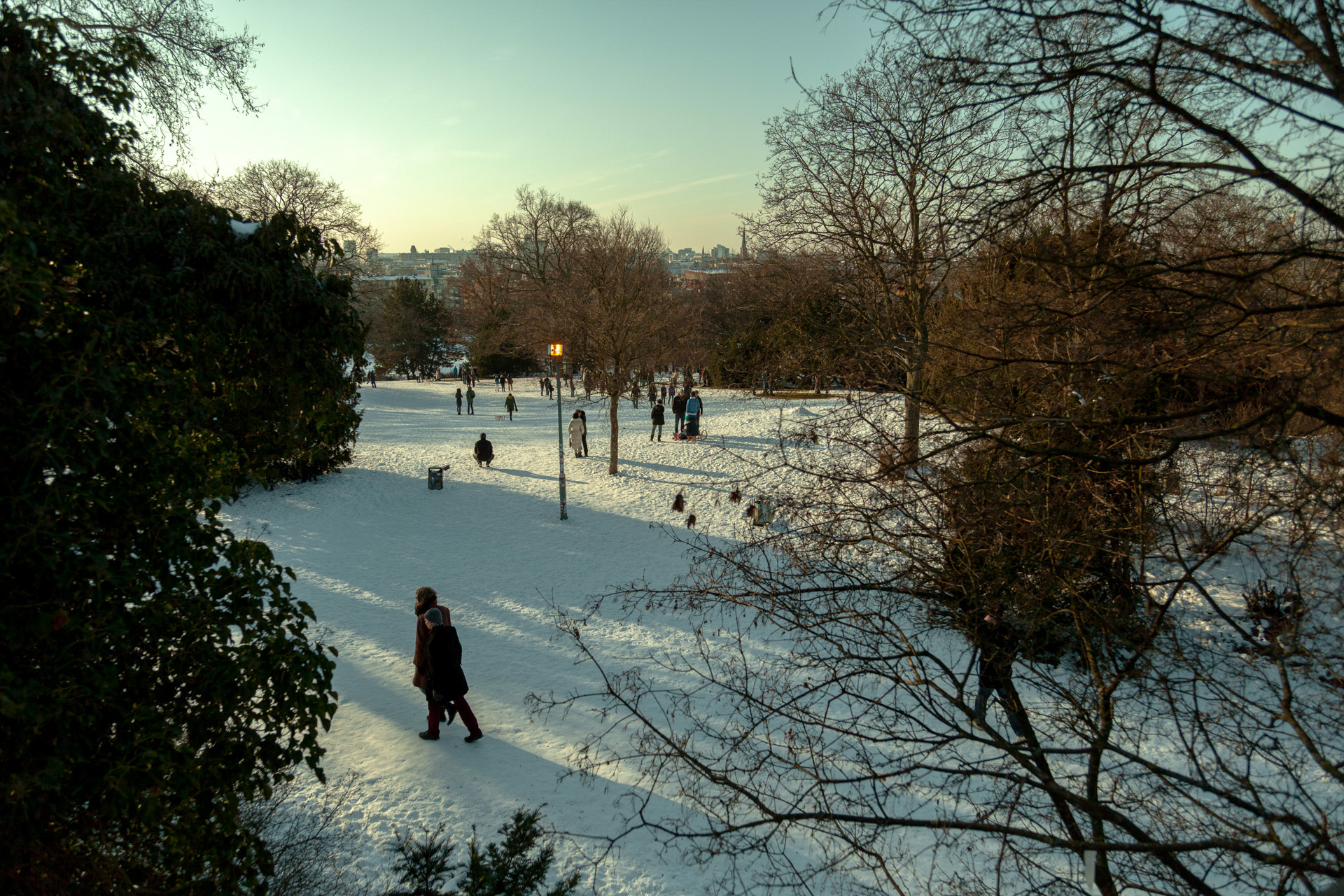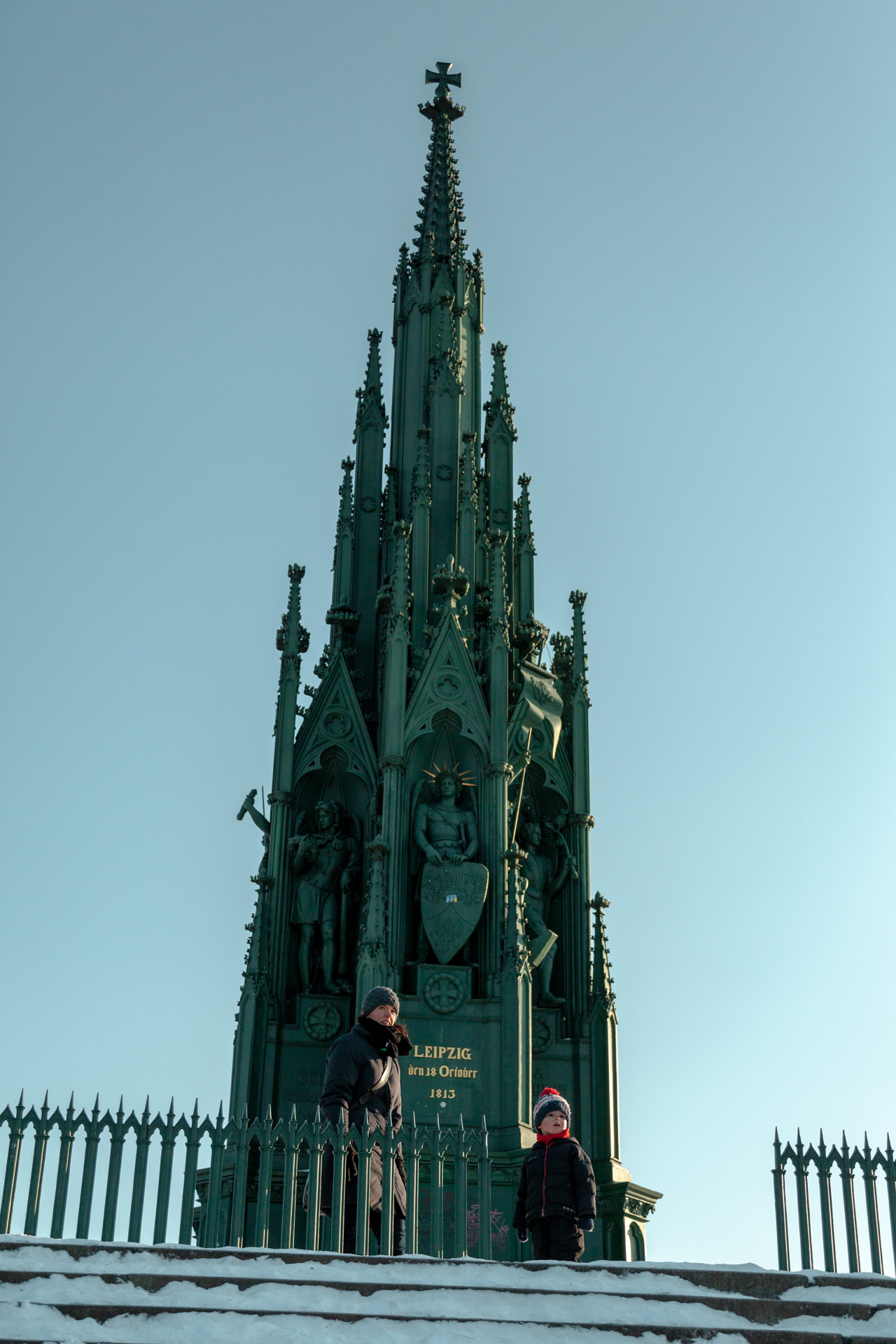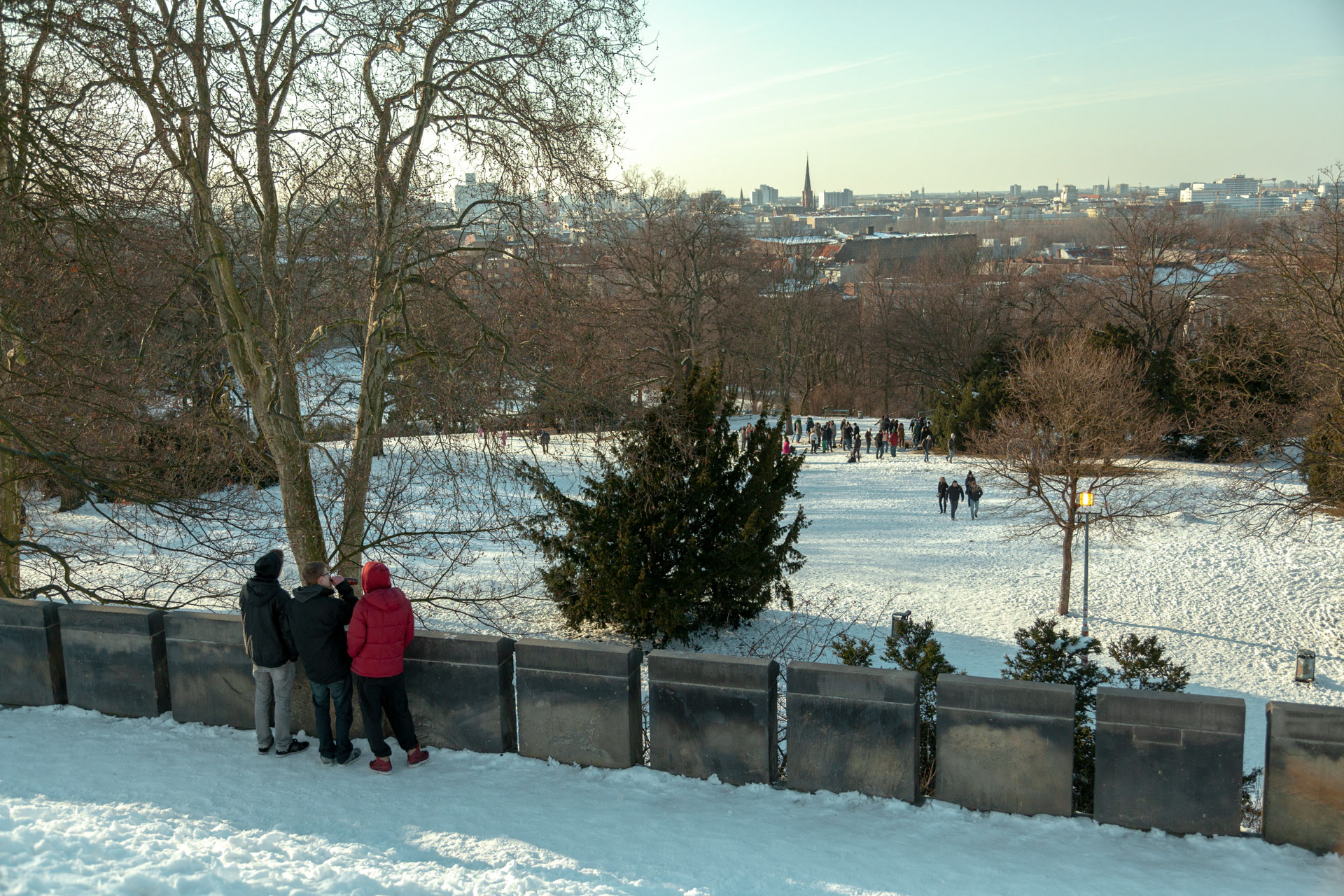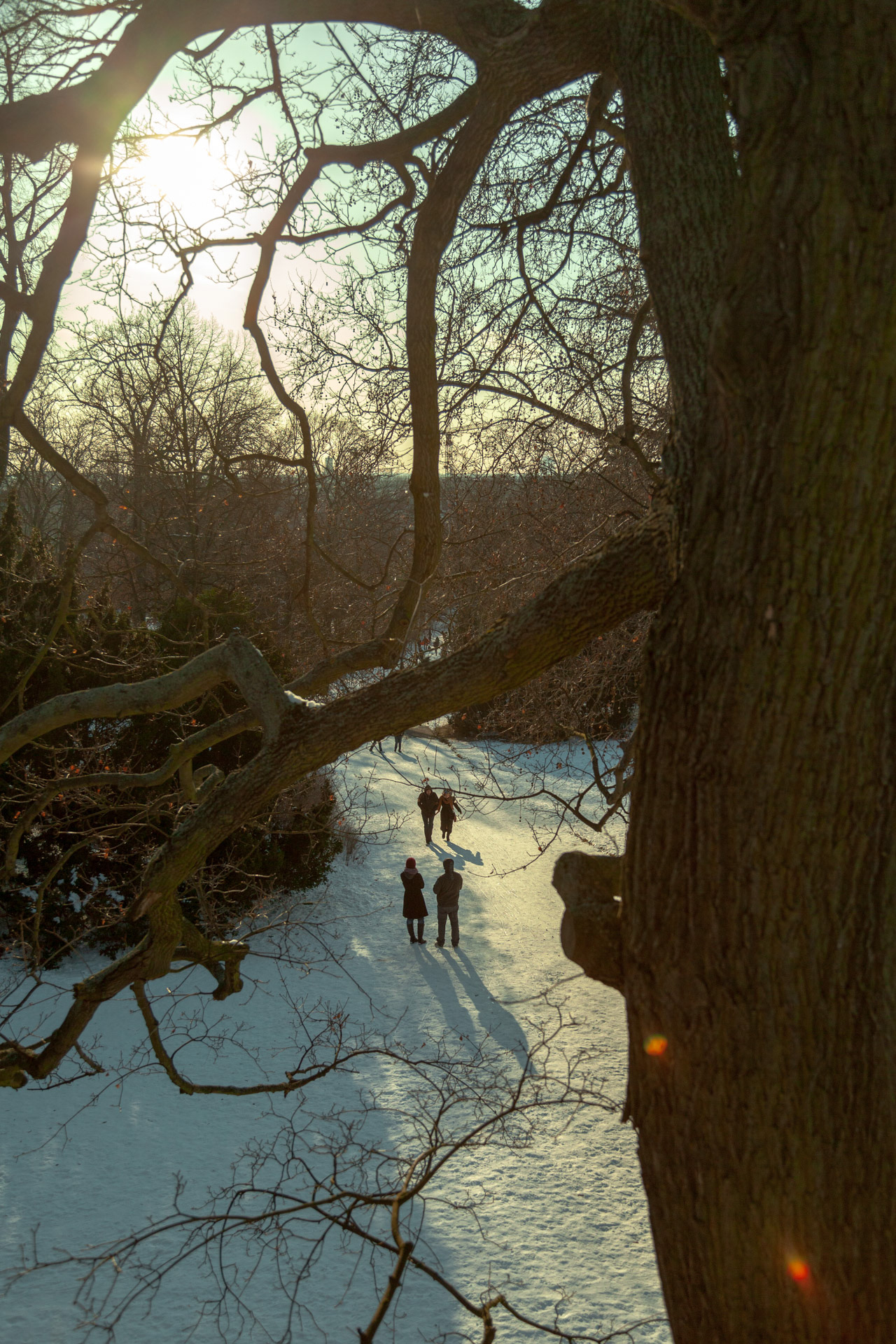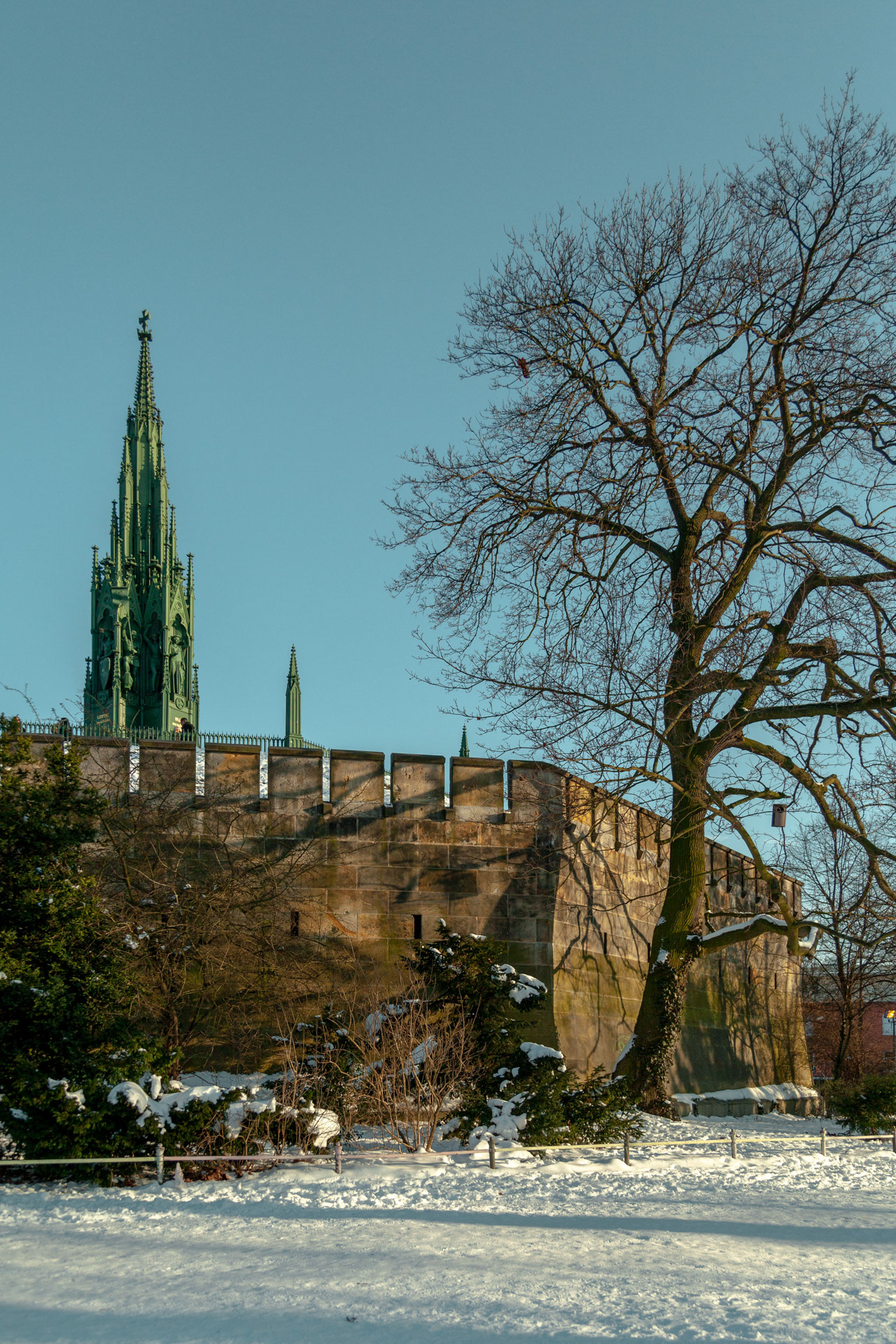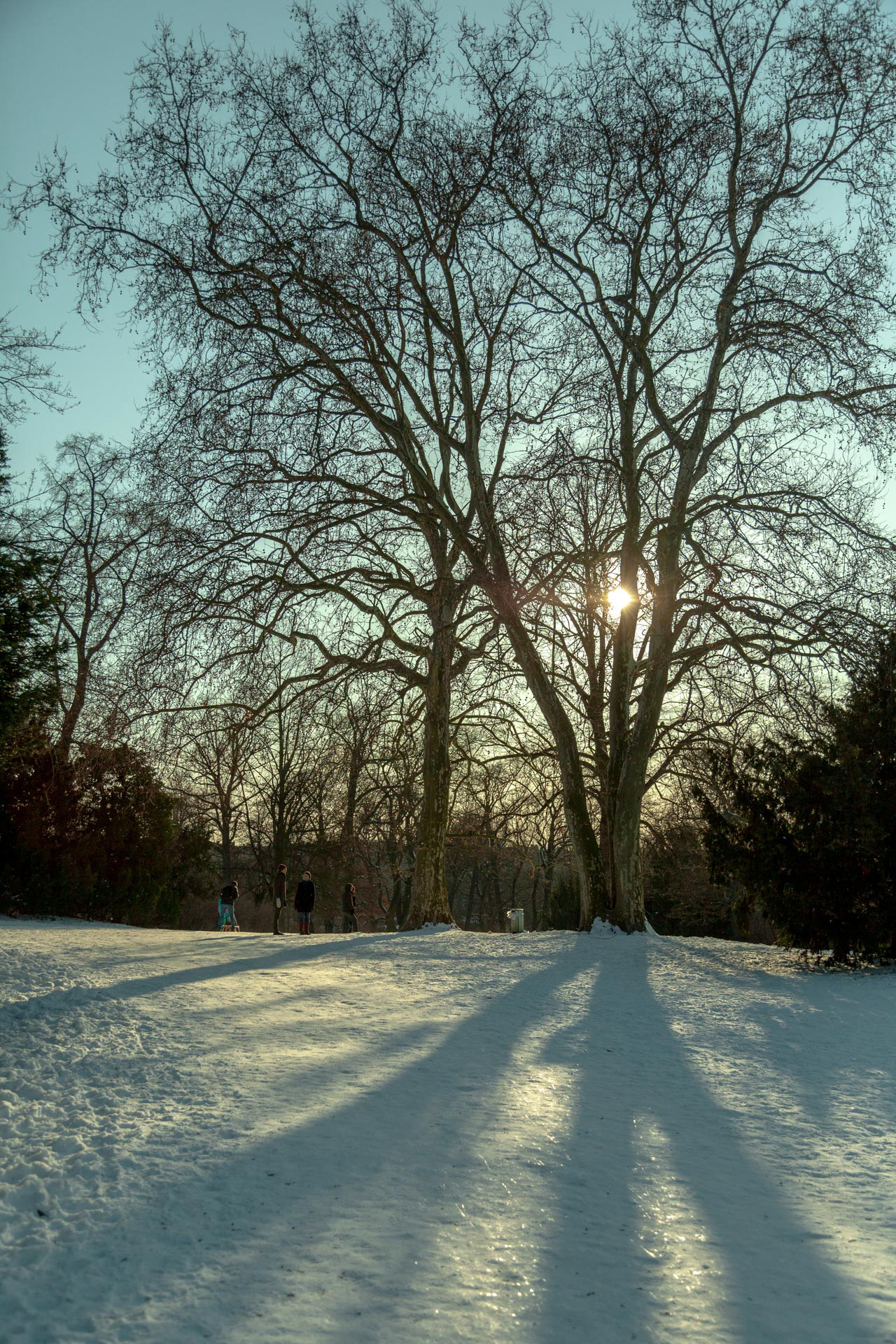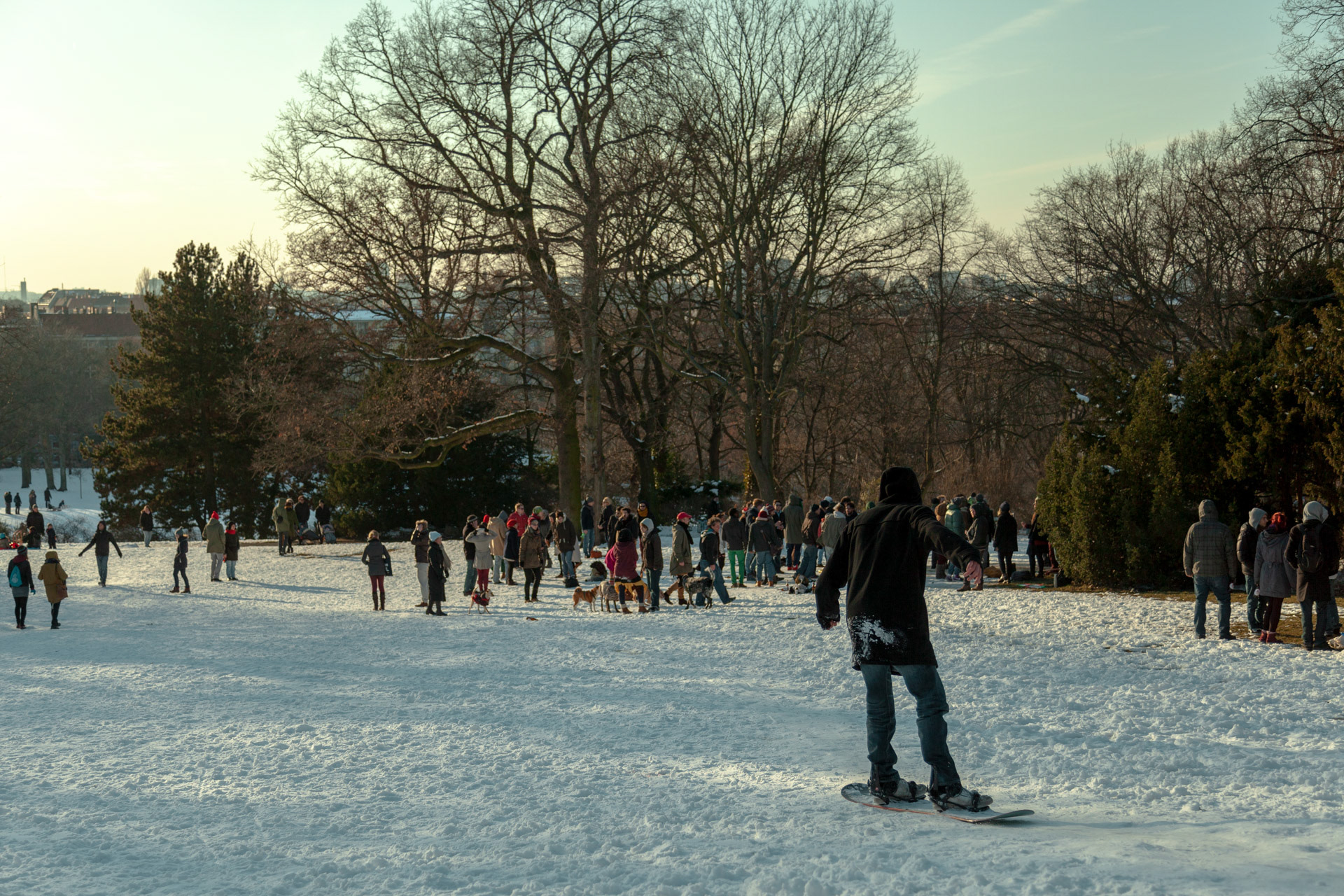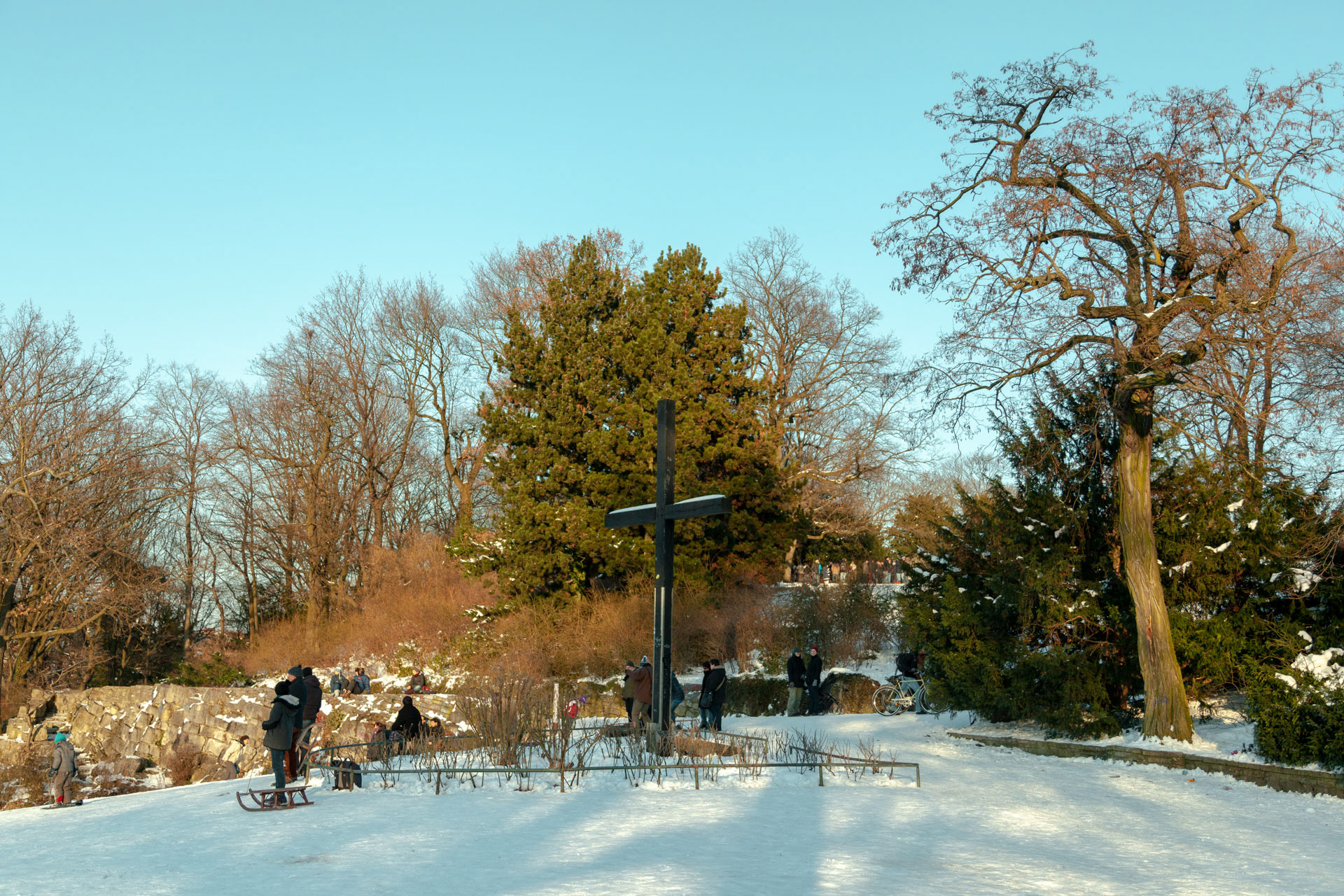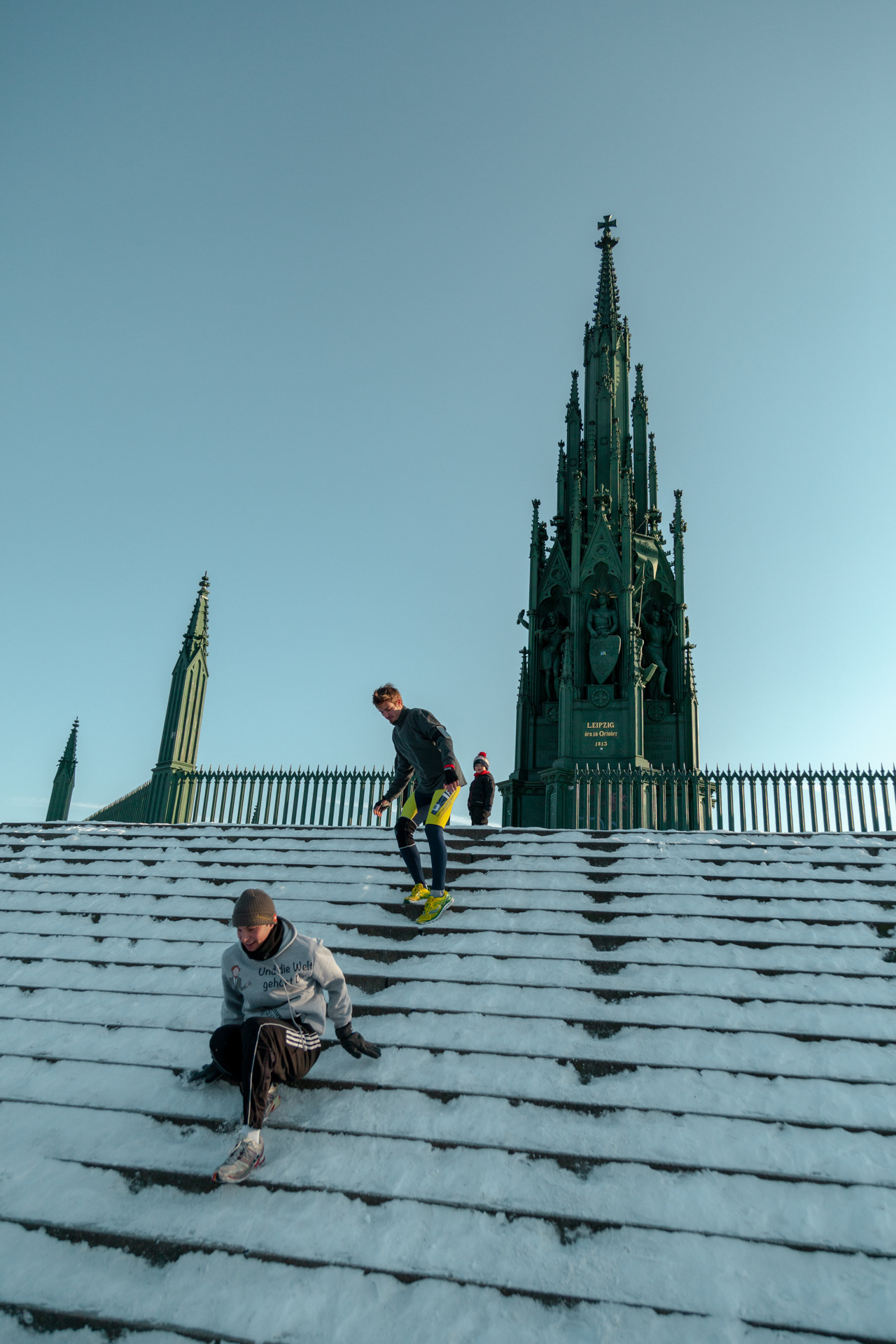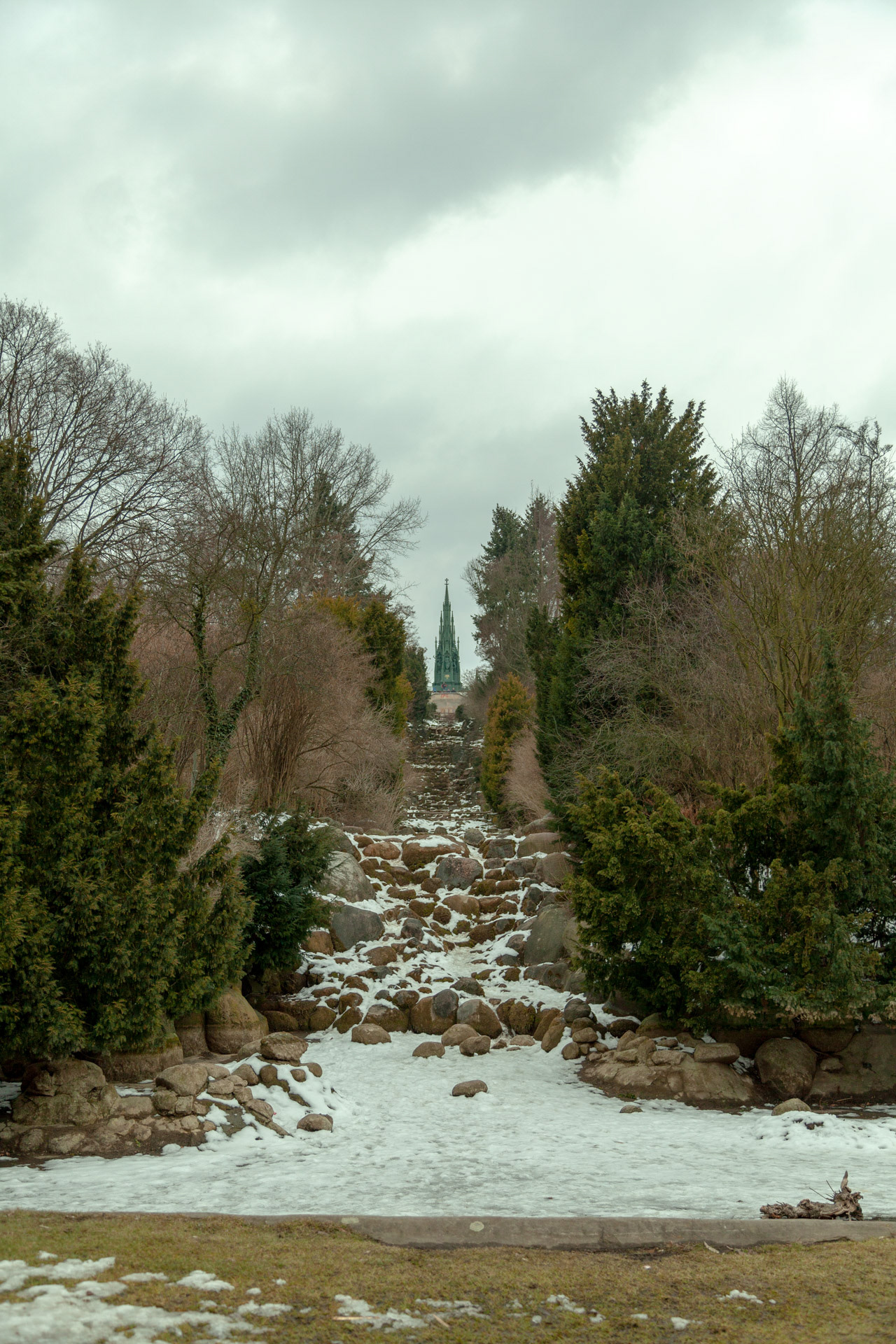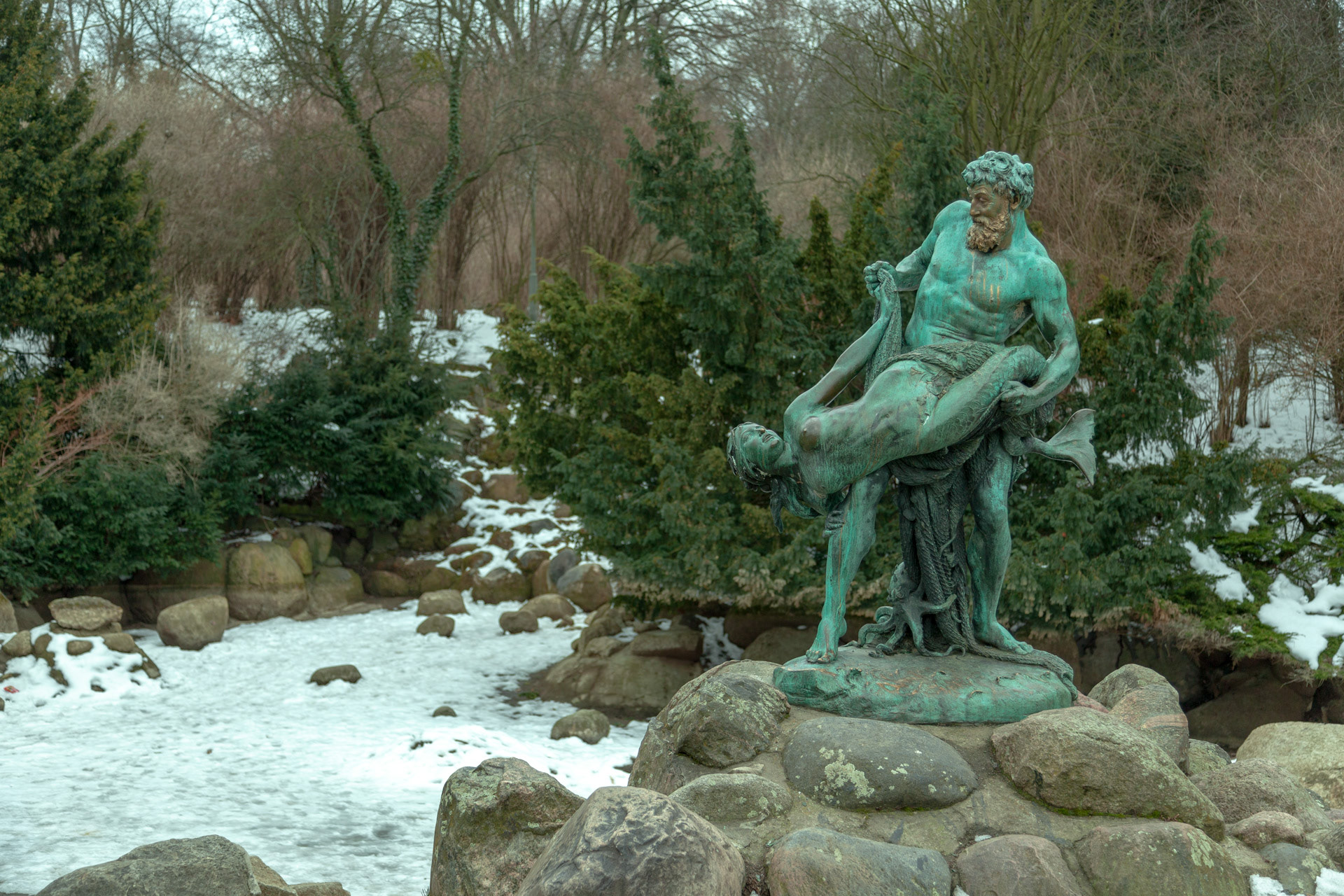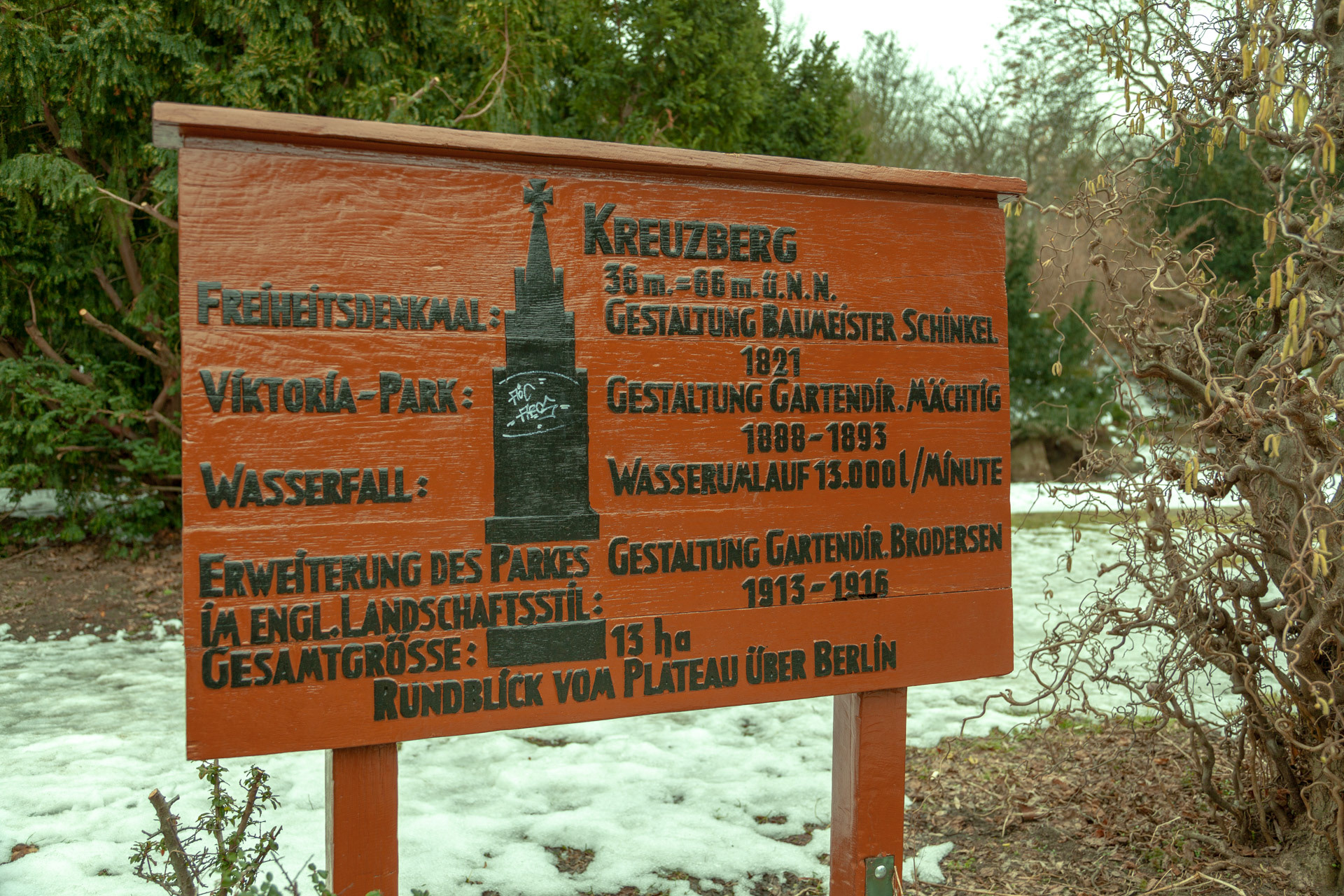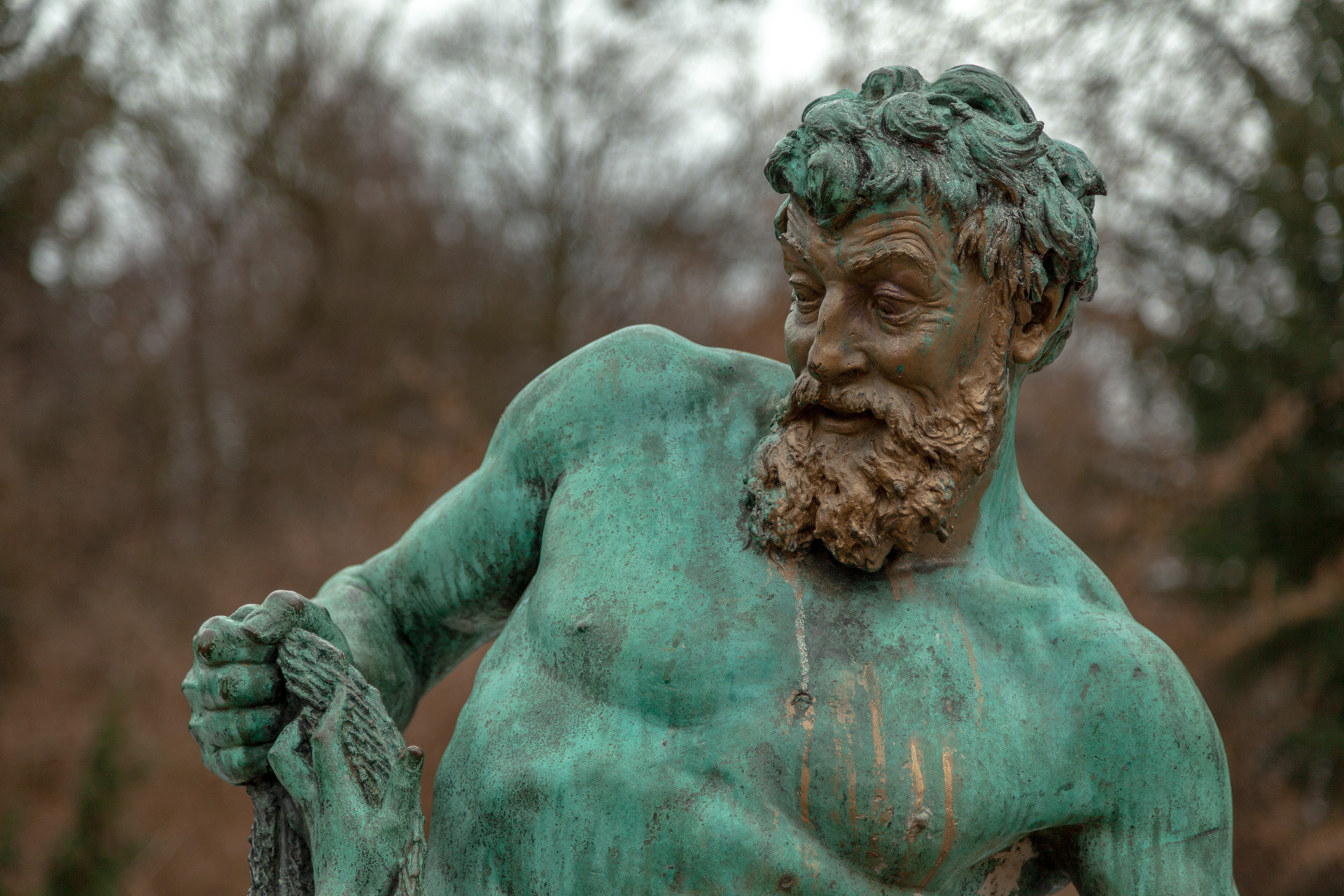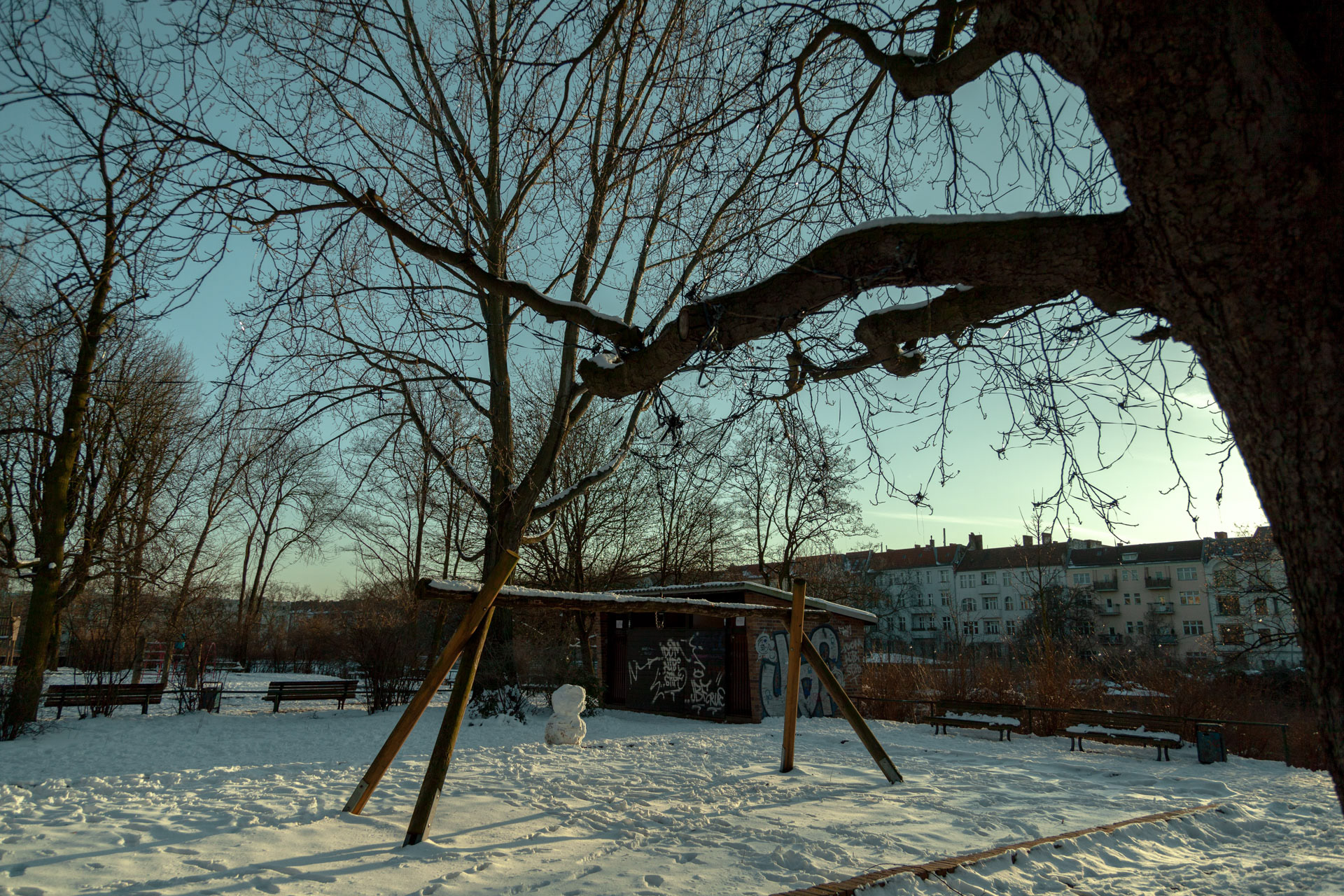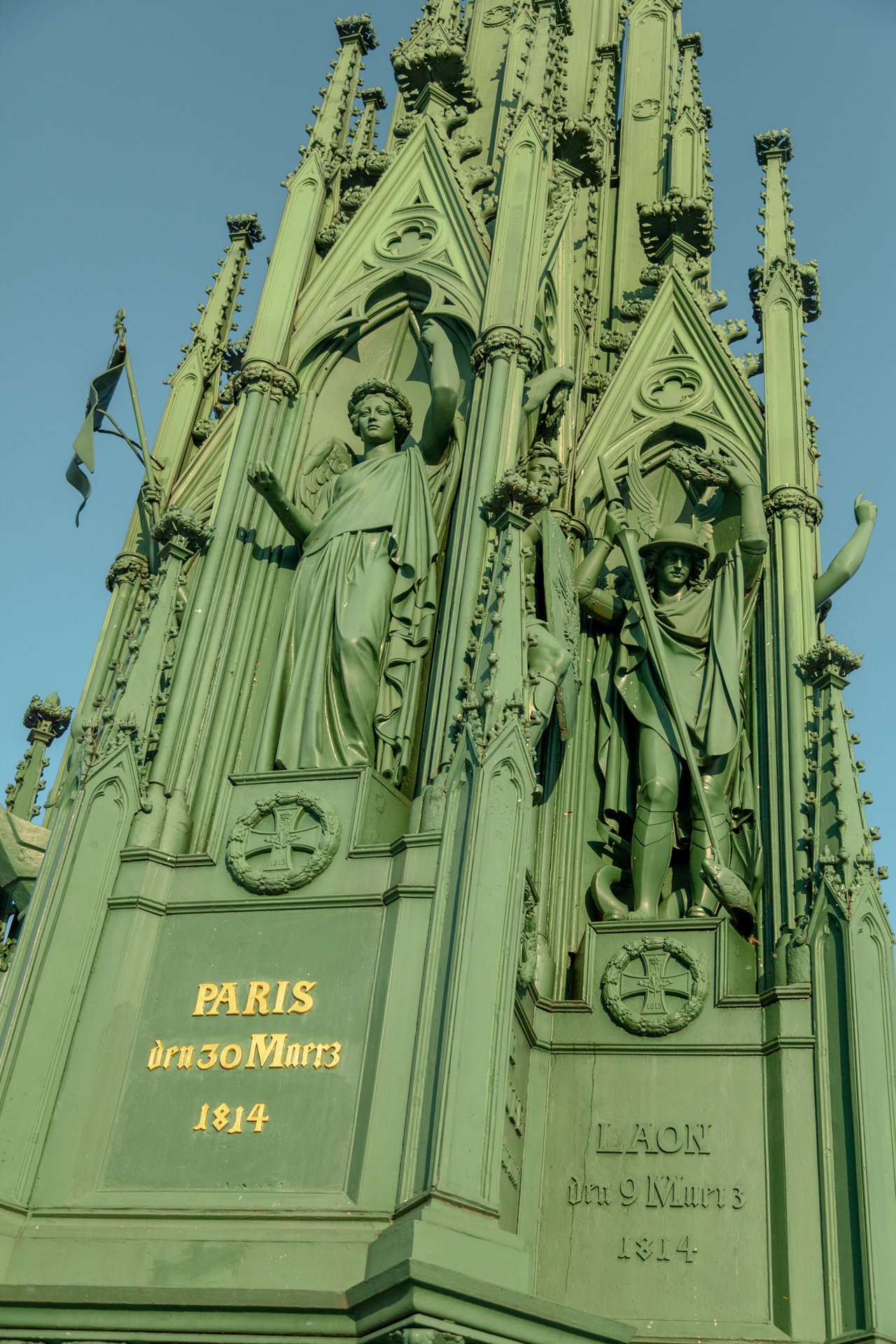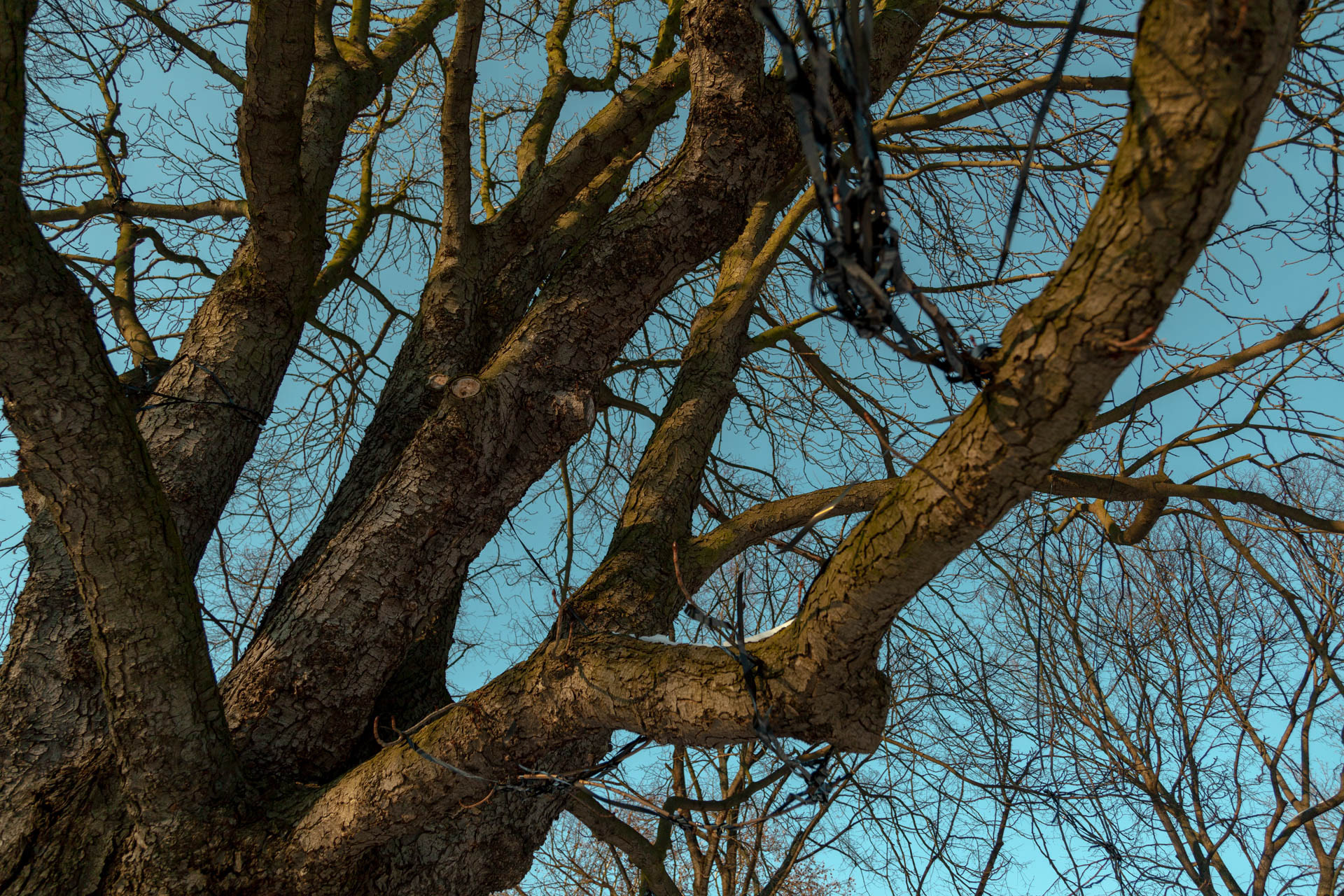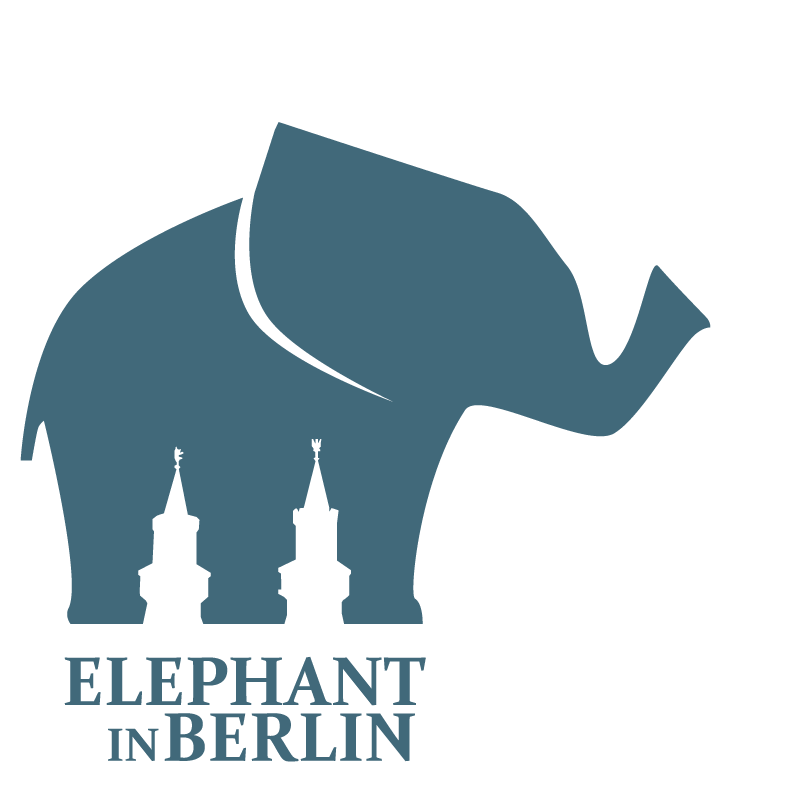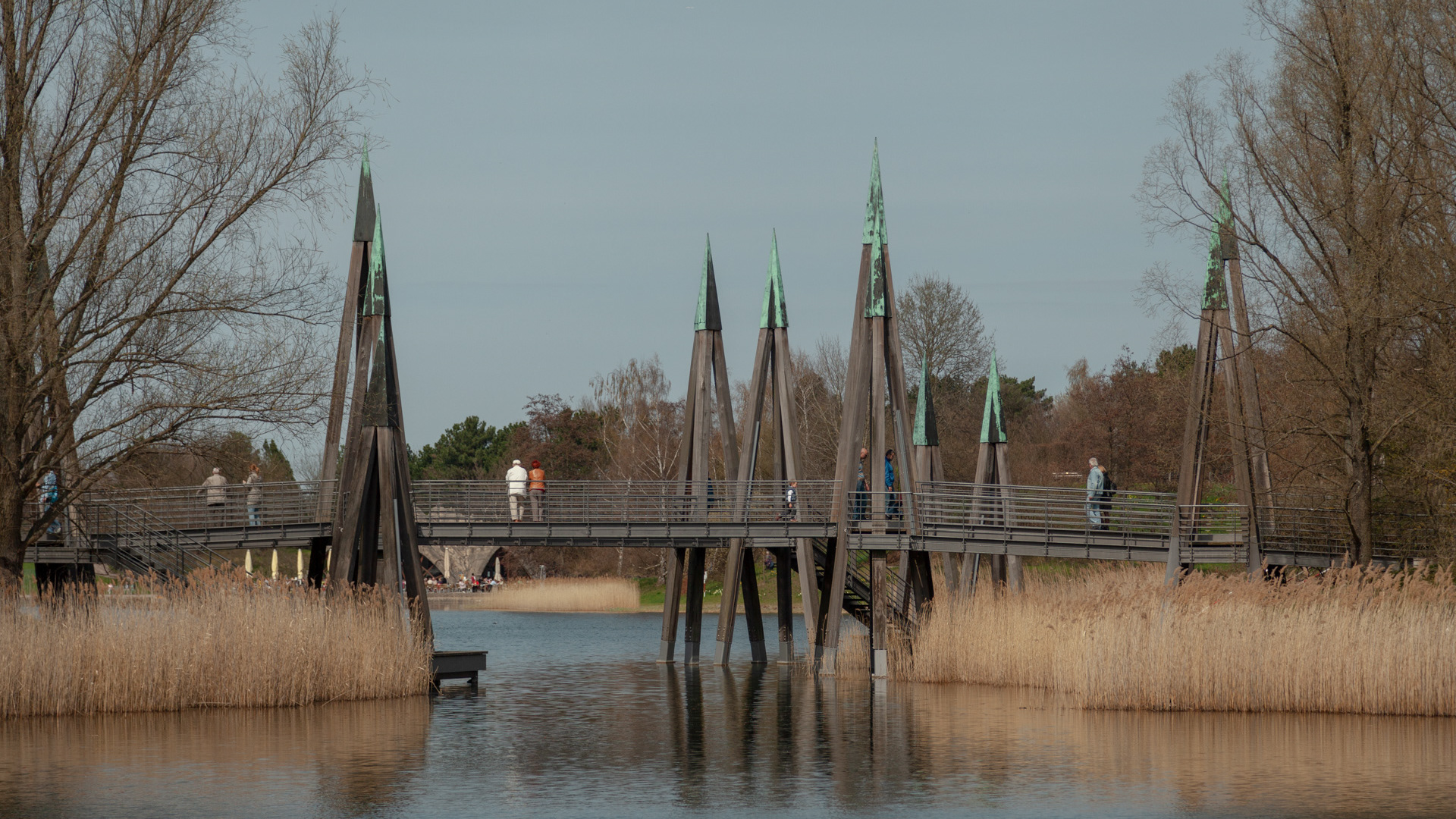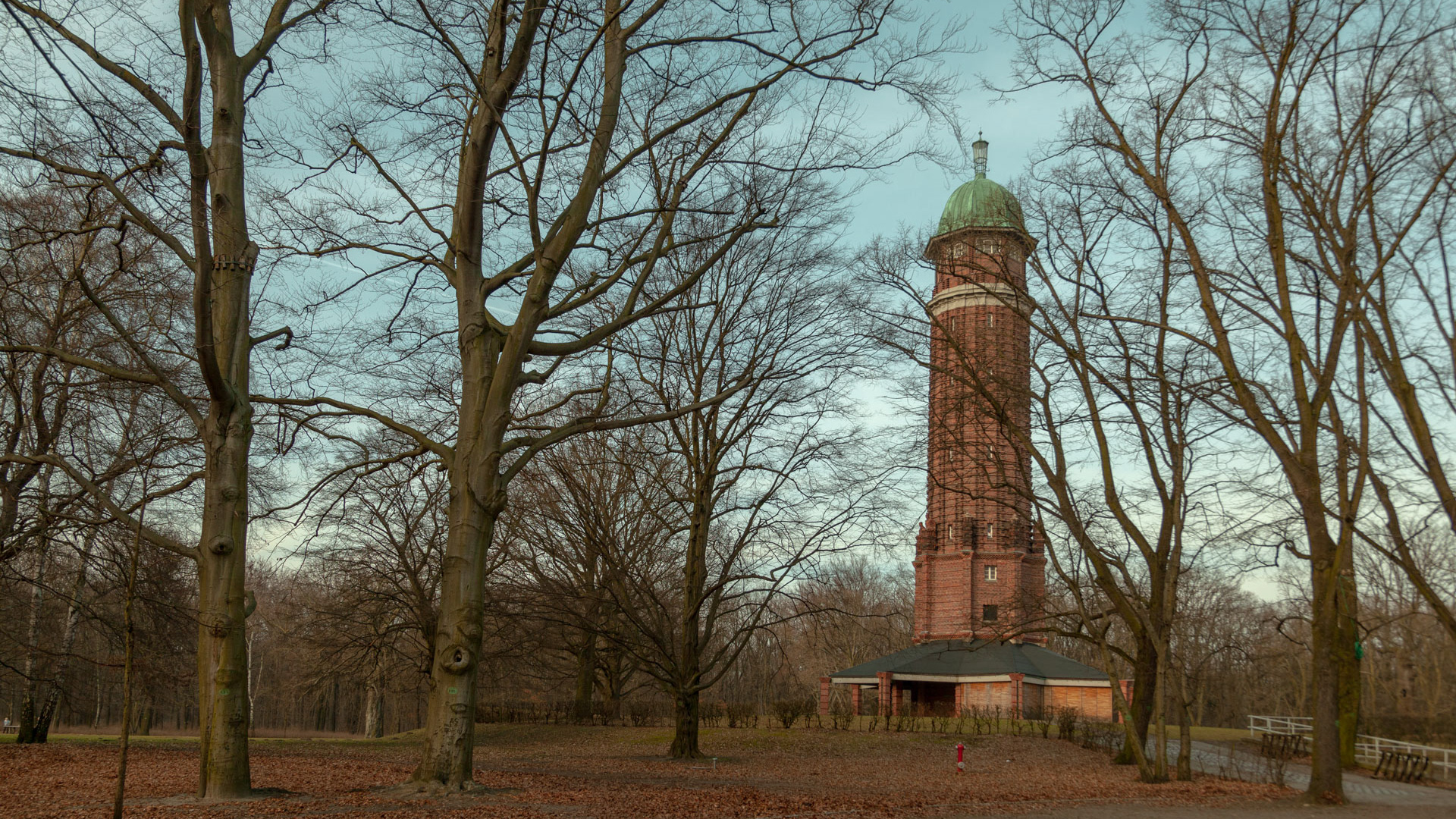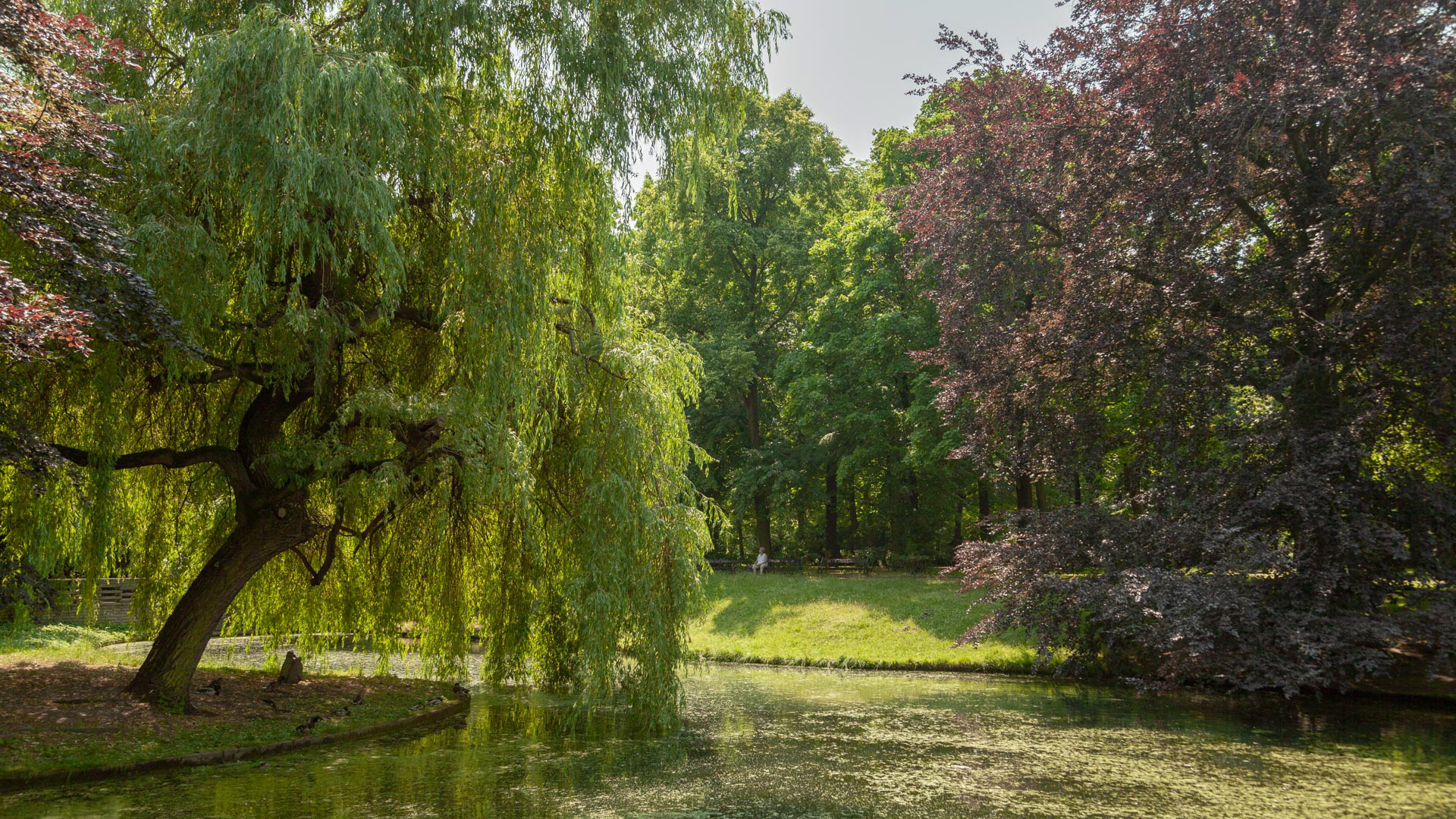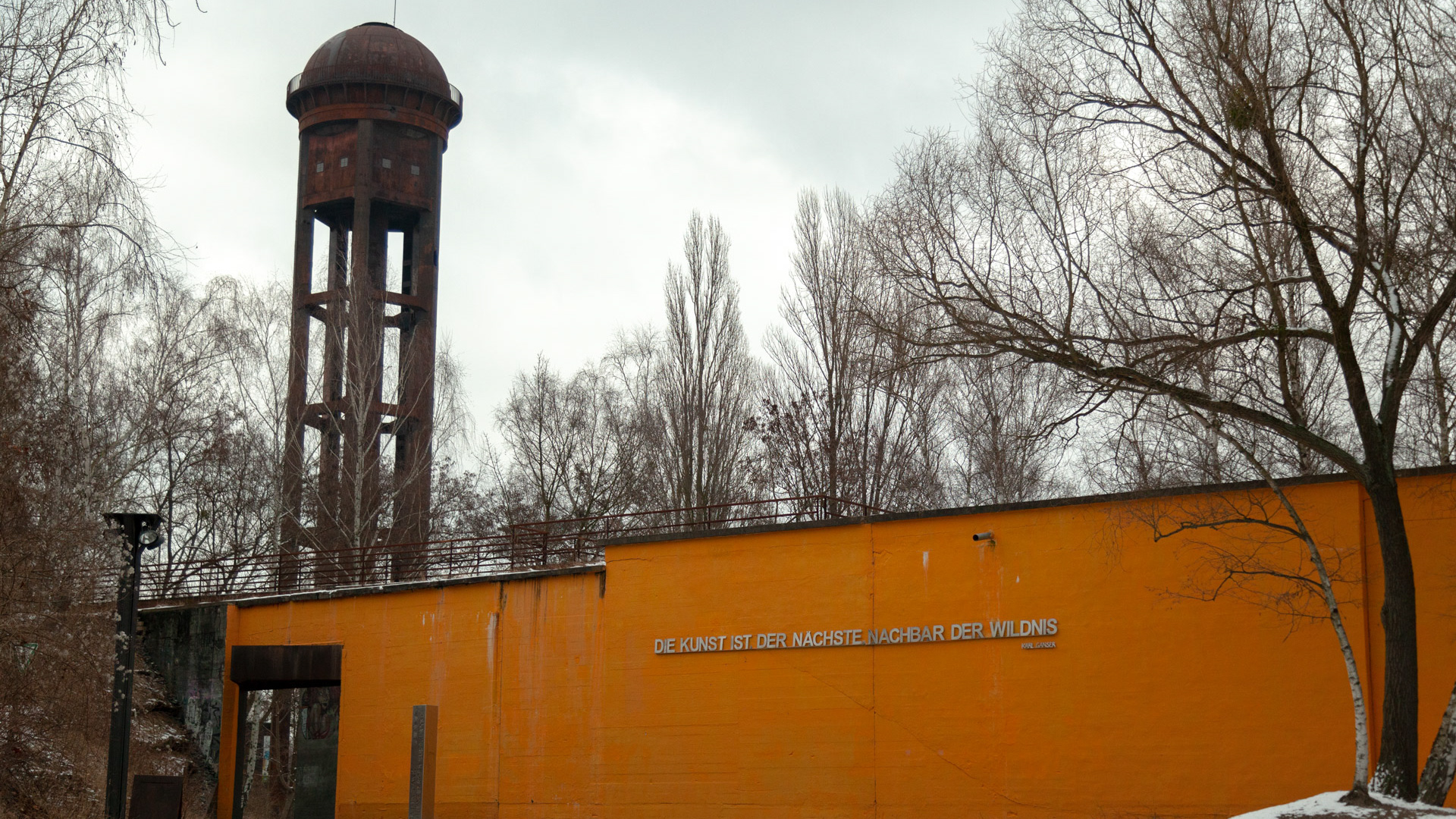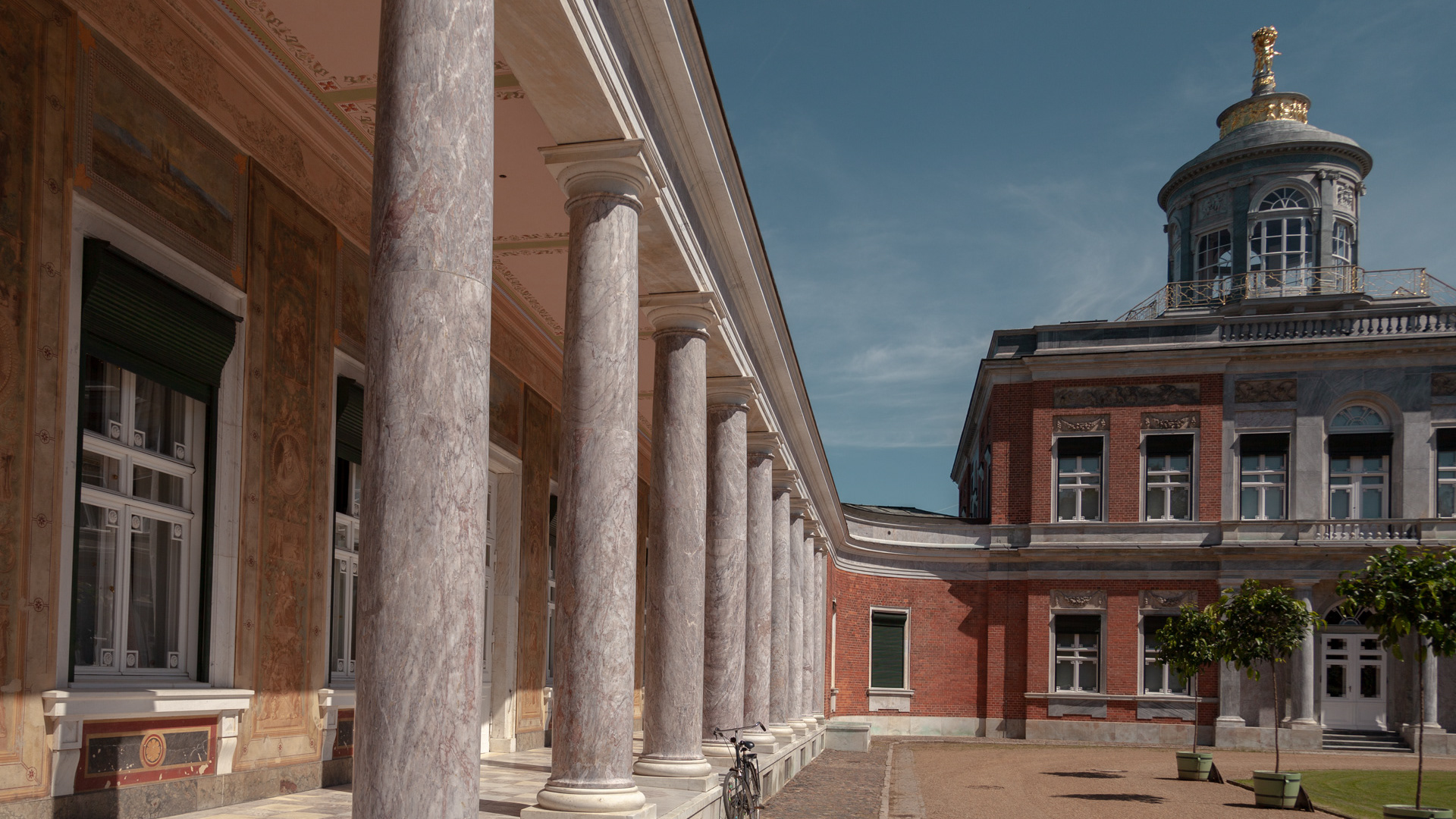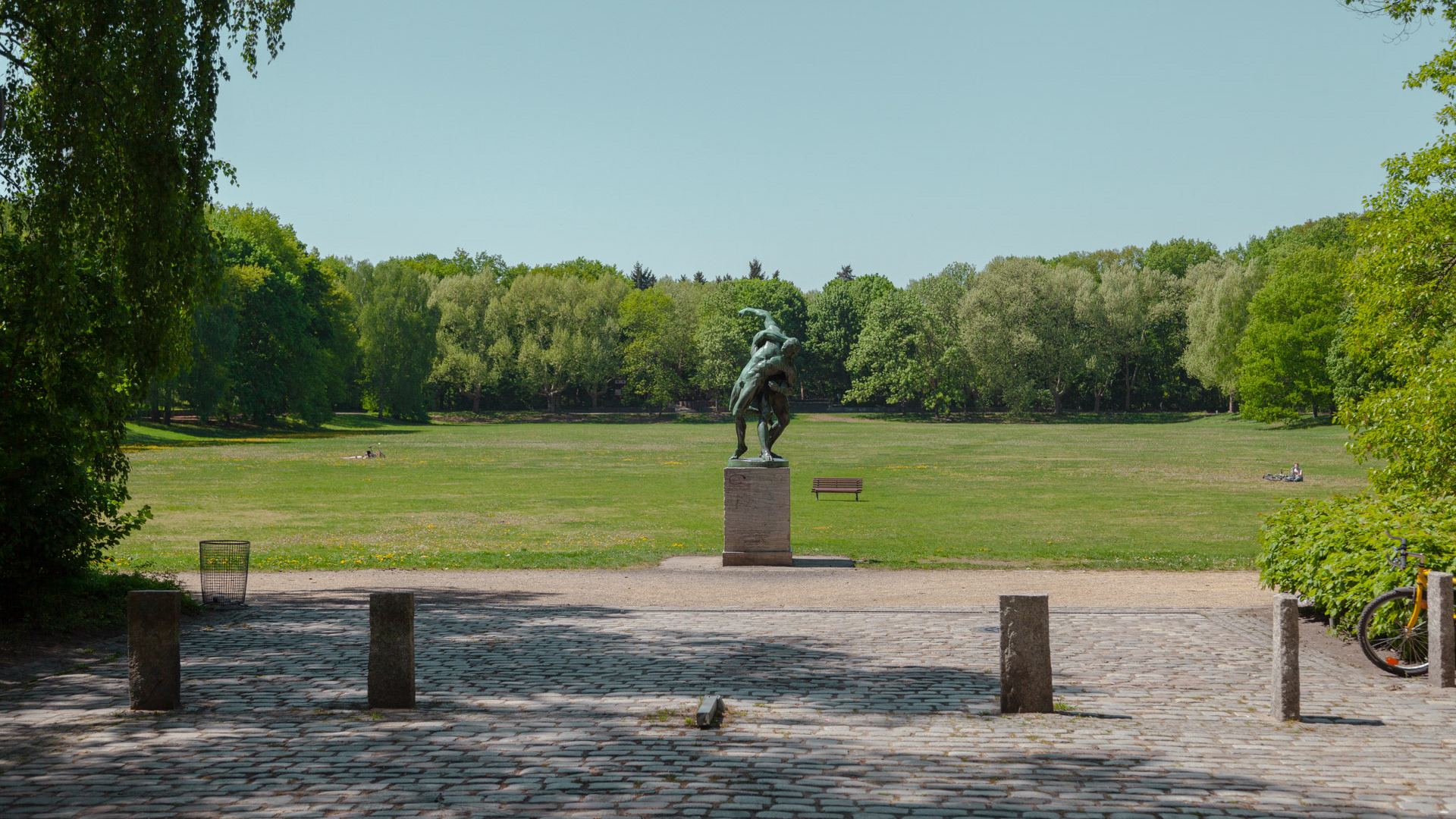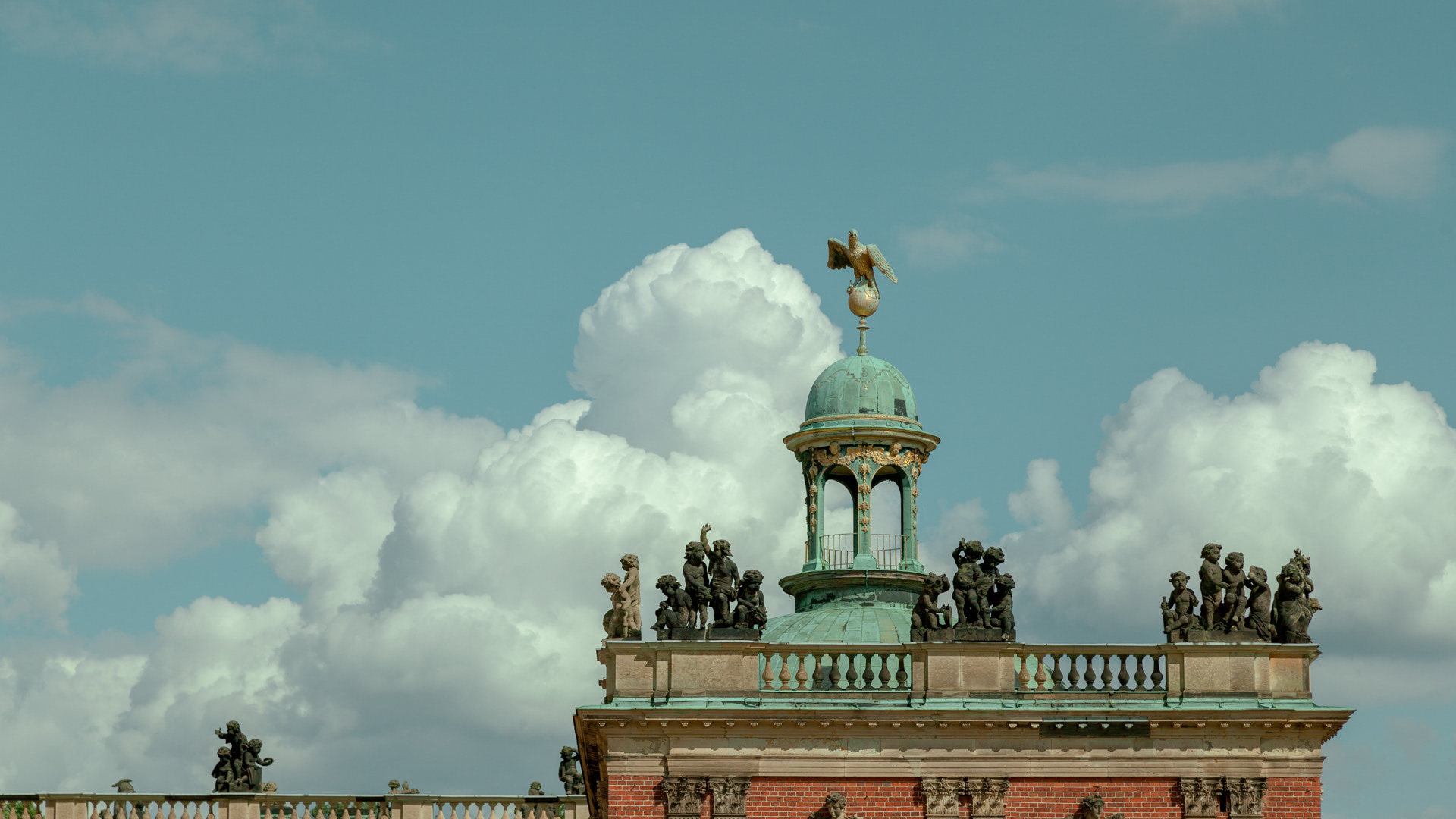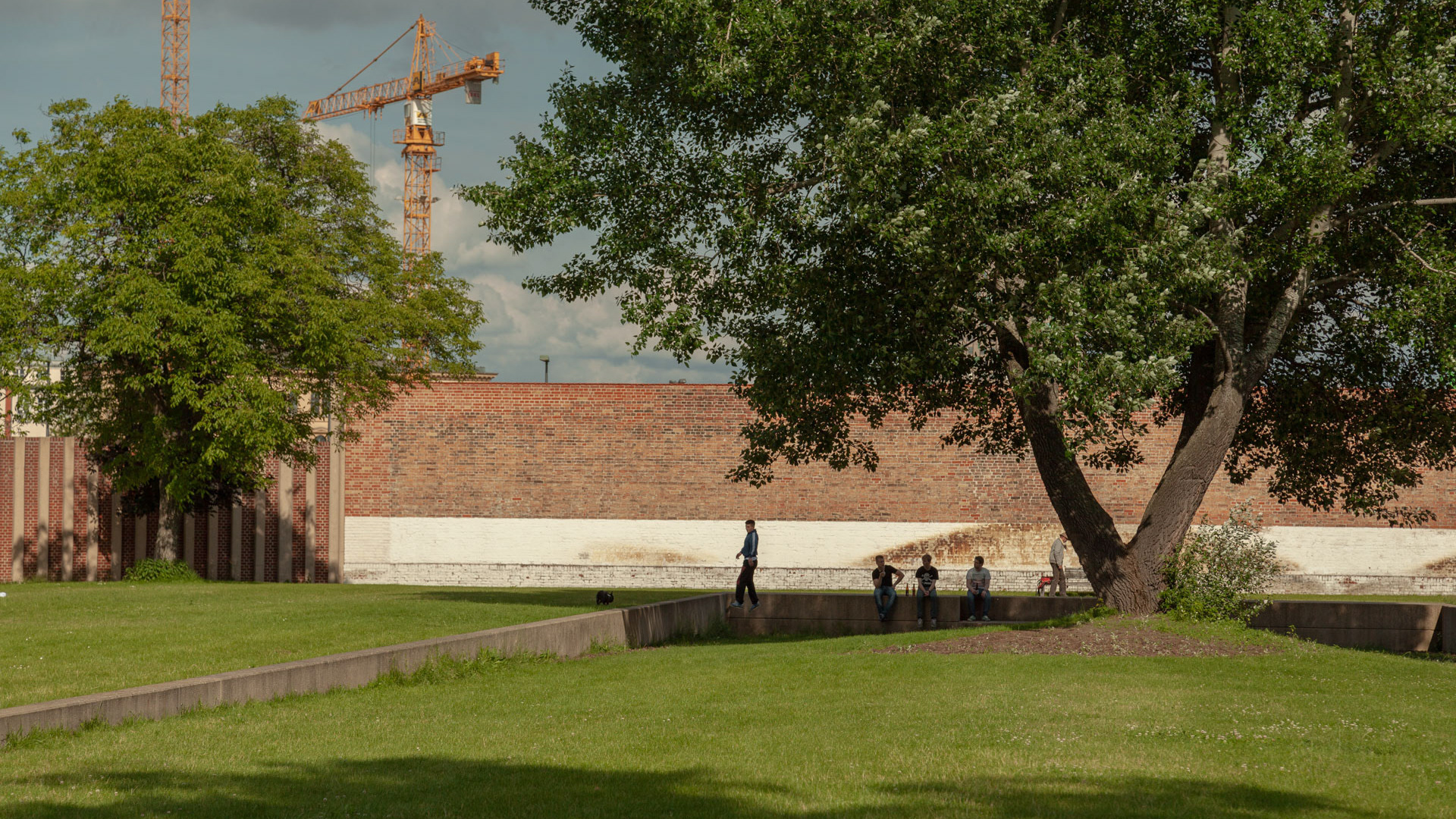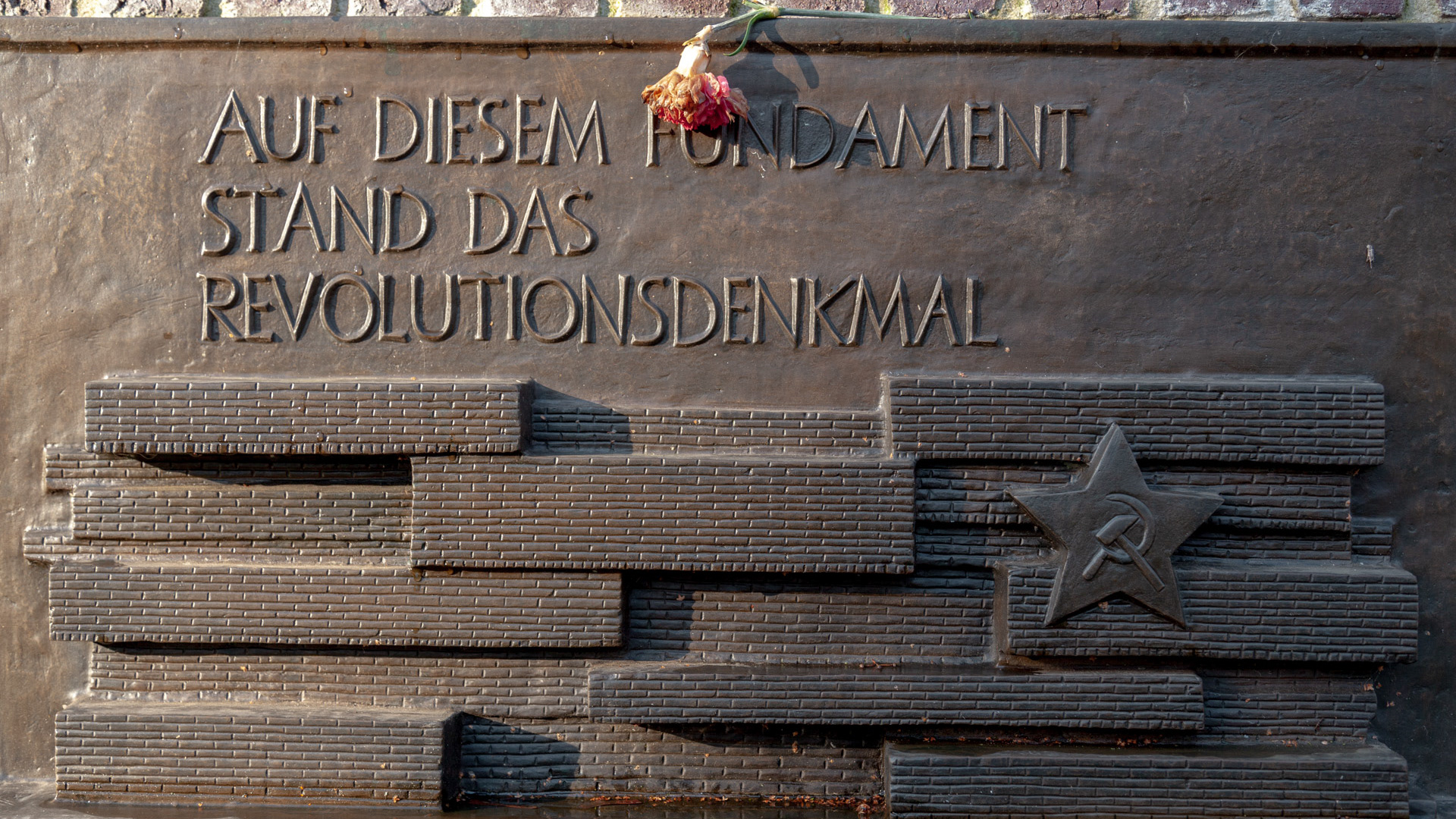The Victoriapark is the park that gives the name to the district of Kreuzberg (the hill of the cross), opened in 1894. The king renamed the hill Kreuzberg after the Iron Cross (Eisernes Kreuz) at the top of the monument, it became the name giver of the Kreuzberg borough created by the 1920 Greater Berlin Act.
The major landmark of the park is a cast iron monument of 1821 dedicated by King Frederick William III of Prussia to the liberation wars against Napoleon, inaugurated at the top of the 66 m promontory west of the road to Tempelhof, then known as Tempelhofer Berg or Runder Berg.
The park is famouse for an artificial waterfall used in winter and for a historic wine-growing area, today the park is neighbouring two small vineyards.
The Victoria Park was included in the Nazi plans for rebuilding Berlin, but only preparations materialised. In summer 1944 the Organisation Todt started driving five tunnels into the northern Kreuzberg slope from Kreuzbergstraße to use as as air-raid shelters, but they were partially destroyed by British bombs.
One part of then used as a safe place for casts of various sculptures, such as the Quadriga of the Brandenburg Gate.
The major landmark of the park is a cast iron monument of 1821 dedicated by King Frederick William III of Prussia to the liberation wars against Napoleon, inaugurated at the top of the 66 m promontory west of the road to Tempelhof, then known as Tempelhofer Berg or Runder Berg.
The park is famouse for an artificial waterfall used in winter and for a historic wine-growing area, today the park is neighbouring two small vineyards.
The Victoria Park was included in the Nazi plans for rebuilding Berlin, but only preparations materialised. In summer 1944 the Organisation Todt started driving five tunnels into the northern Kreuzberg slope from Kreuzbergstraße to use as as air-raid shelters, but they were partially destroyed by British bombs.
One part of then used as a safe place for casts of various sculptures, such as the Quadriga of the Brandenburg Gate.
